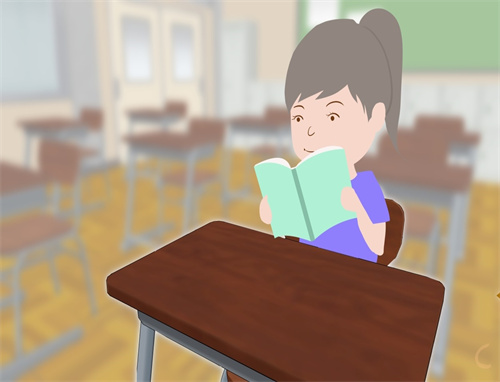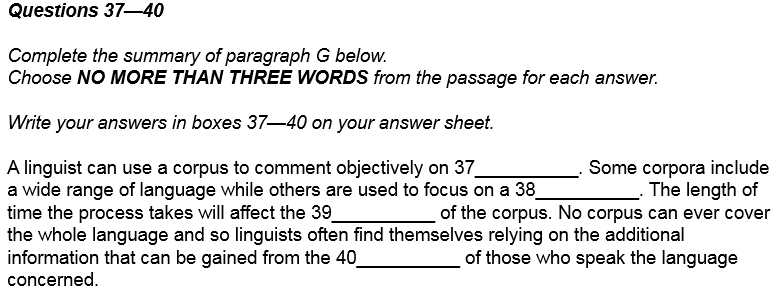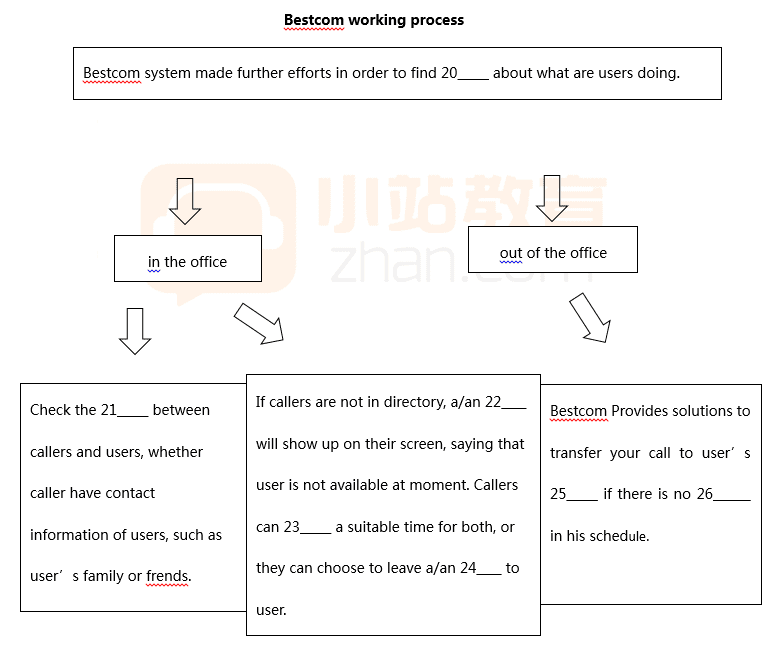今天小编给大家带来了托福阅读提分有哪些实用小方法,希望能够帮助到大家,下面小编就和大家分享,来欣赏一下吧。
托福阅读提分有哪些实用小方法
从某种意义上来讲,你积累的英语词汇量的多少,影响着你在托福考试中取得的成绩。如果说你具备的词汇量达不到基本的要求,即使你的语言能力再强也过不了托福难关。之所以说词汇量的重要性,想必就算小编不加以强调,大家也都会很清楚。试想一下,如果你掌握的词汇量不够多,当看见一个完整的句子时,你觉得你可能将整个句子要表达的意思理解清楚吗?所以说,想要训练阅读能力首先就要从词汇量上下手,只有掌握足够多的词汇后,你才具备他警告阅读能力的标准。
阅读大量英语文章,增加自己的知识面
当一个人知道的东西多了后,在面临问题时,就会显得更有自信,解决问题也会有自己的路子。这样方式在阅读能力训练中也同样适用,考生利用业余时间丰富自己的知识面,对各国或各地区等相关文化及常识有一定了解后,在参加托福考试时,当阅读到自己有所了解的东西后,解题试题时就会比较有自信和感觉,不会因为自己的不了解或是不清楚,对文章要说的东西特别盲目。相信每一位考生在解答试题时,如果阅读到自己熟悉的文章后,解答试题时也会比较轻松和容易。答题的准确率自然而然的也就会有所上升。
注意解题要领,无需阅读全篇文章
考生在解答阅读试题时往往会存在一定的误区,认为想要解答试题必须要阅读整片文章。小编在这提醒各位烤鸭们,这种理念是错误的。阅读文章的做种目的还不就是为了解答试题?只要能够准确的解答试题,不完全阅读文章页是可以的,有没有人会问你,全篇文章的详细内容,所以说,阅读时要秉着做题去阅读,而不是为了阅读而去阅读。还有一点,考生解答阅读试题时,可以先看题干,对所要提出的问题有了一定的了解后,带着问题再去阅读文章,这样做在阅读时就会有着重点,针对性强,解答也比较容易,只要找到题干的大概范围,很轻松就可以选出想要的选项了。同时,也减少了大量的阅读时间,为你的考试赢回不少时间,可以用这部分时间去解答其他较难的试题。
“适合别人的不一定适合自己”。总之,关于托福考试阅读能力训练的相关方式,小编简单为考生整理如上。考生在训练时可以选择的参考,或许小编说的也有不对的地方,但是目的只是为了能够让大家更清楚托福考试阅读能力训练的相关方式,考生可以根据自己的实际需求去训练,尽快找到适合自己的方式。
托福阅读真题原题+题目
During the seventeenth and eighteenth centuries, almost nothing was written about the contributions of women during the colonial period and the early history of the newly formed United States. Lacking the right to vote and absent from the seats of power, women were not considered an important force in history. Anne Bradstreet wrote some significant poetry in the seventeenth century, Mercy Otis Warren produced the best contemporary history of the American Revolution, and Abigail Adams penned important letters showing she exercised great political influence over her husband, John, the second President of the United States. But little or no notice was taken of these contributions. During these centuries, women remained invisible in history books.
Throughout the nineteenth century, this lack of visibility continued, despite the efforts of female authors writing about women. These writers, like most of their male counterparts, were amateur historians. Their writings were celebratory in nature, and they were uncritical in their selection and use of sources.
During the nineteenth century, however, certain feminists showed a keen sense of history by keeping records of activities in which women were engaged. National, regional, and local women's organizations compiled accounts of their doings. Personal correspondence, newspaper clippings, and souvenirs were saved and stored. These sources from the core of the two greatest collections of women's history in the United States one at the Elizabeth and Arthur Schlesinger Library at Radcliff Céol lege, and the other the Sophia Smith Collection at Smith College. Such sources have provided valuable materials for later generations of historians.
Despite the gathering of more information about ordinary women during the nineteenth century, most of the writing about women conformed to the great women theory of history, just as much of mainstream American history concentrated on great men. To demonstrate that women were making significant contributions to American life, female authors singled out women leaders and wrote biographies, or else important women produced their autobiographies. Most of these leaders were involved in public life as reformers, activists working for women's right to vote, or authors, and were not representative at all of the great of ordinary woman. The lives of ordinary people continued, generally, to be untold in the American histories being published.
1. What does the passage mainly discuss?
(A) The role of literature in early American histories
(B) The place of American women in written histories
(C) The keen sense of history shown by American women
(D) The great women approach to history used by American historians
2. The word contemporary in line 6 means that the history was
(A) informative
(B) written at that time
(C) thoughtful
(D) faultfinding
3. In the first paragraph, Bradstreet, Warren, and Adams are mentioned to show that
(A) a woman's status was changed by marriage
(B) even the contributions of outstanding women were ignored
(C) only three women were able to get their writing published
(D) poetry produced by women was more readily accepted than other writing by women
4. The word celebratory in line 12 means that the writings referred to were
(A) related to parties
(B) religious
(C) serious
(D) full of praise
5. The word they in line 12 refers to
(A) efforts
(B) authors
(C) counterparts
(D) sources
6. In the second paragraph, what weakness in nineteenth-century histories does the author point
out?
(A) They put too much emphasis on daily activities
(B) They left out discussion of the influence of money on politics.
(C) The sources of the information they were based on were not necessarily accurate.
(D) They were printed on poor-quality paper.
7. On the basis of information in the third paragraph, which of the following would most likely
have been collected by nineteenth-century feminist organizations?
(A) Newspaper accounts of presidential election results
(B) Biographies of John Adams
(C) Letters from a mother to a daughter advising her how to handle a family problem
(D) Books about famous graduates of the country's first college
8. What use was made of the nineteenth-century women's history materials in the Schlesinger
Library and the Sophia Smith Collection?
(A) They were combined and published in a multivolume encyclopedia
(B) They formed the basis of college courses in the nineteenth century.
(C) They provided valuable information for twentieth-century historical researchers.
(D) They were shared among women's colleges throughout the United States.
9. In the last paragraph, the author mentions all of the following as possible roles of nineteenth-century great women EXCEPT
(A) authors
(B) reformers
(C) activists for women's rights
(D) politicians
10. The word representative in line 29 is closest in meaning to
(A) typical
(B) satisfied
(C) supportive
(D) distinctive
托福阅读真题原题+题目
Fungi, of which there are over 100,000 species, including yeasts and other single-celled organisms as well as the common molds and mushrooms, were formerly classified as members of the plant kingdom. However, in reality they are very different from plants and today they are placed in a separate group altogether. The principal reason for this is that none of them possesses chlorophyll, and since they cannot synthesize their own carbohydrates, they obtain their supplies either from the breakdown of dead organic matter or from other living organisms. Furthermore the walls of fungal cells are not made of cellulose, as those of plants are, but of another complex sugarlike polymer called chitin, the material from which the hard outer skeletons of shrimps, spiders, and insects are made. The difference between the chemical composition of the cell walls of fungi and those of plants is of enormous importance because it enables the tips of the growing hyphae, the threadlike cells of the fungus, to secrete enzymes that break down the walls of plant cells without having any effect on those of the fungus itself. It is these cellulose-destroying enzymes that enable fungi to attack anything made from wood, wood pulp, cotton, flax, or other plant material.
The destructive power of fungi is impressive. They are a major cause of structural damage to building timbers, a cause of disease in animals and humans, and one of the greatest causes of agricultural losses. Entire crops can be wiped out by fungal attacks both before and after harvesting. Some fungi can grow at +50 C, while o°thers can grow at -5 C, so ev°en food in cold storage may not be completely safe from them. On the other hand, fungi bring about the decomposition of dead organic matter, thus enriching the soil and returning carbon dioxide to the atmosphere. They also enter into a number of mutually beneficial relationships with plants and other organisms. In addition, fungi are the source of many of the most potent antibiotics used in clinical medicine, including penicillin.
1. What does paragraph 1 mainly discuss?
(A) differences between simple and complex fungi
(B) functions of chlorophyll in plants
(C) functions of sugar in the walls of fungal cells
(D) differences between fungi and plants
2. Which of the following is mentioned as a major change in how scientists approach the study of fungi?
(A) Fungi are no longer classified as plants
(B) Some single-cell organisms are no longer classified as fungi.
(C) New methods of species identification have been introduced
(D) Theories about the chemical composition of fungi have been revised.
3. The word principal in line 4 is closest in meaning to
(A) true
(B) main
(C) logical
(D) obvious
4. According to the passage , how do fungi obtain carbohydrates?
(A) The absorb carbohydrates from their own cell walls.
(B) They synthesize chlorophyll to produce carbohydrates.
(C) They produce carbohydrates by breaking down chitin.
(D) They acquire carbohydrates from other organic matter, both living and dead.
5. The passage mentions shrimps, spiders, and insects in line 9 because their skeletons
(A) can be destroyed by fungi
(B) have unusual chemical compositions
(C) contain a material found in the walls of fungal cells
(D) secrete the same enzymes as the walls of fungal cells do
6. Which of the following terms is defined in the passage ?
(A) chlorophyll (line 5)
(B) polymer (line 8)
(C) hyphae (line 12)
(D) enzymes (line 14)
7. The word those in line 13 refers to
(A) tips
(B) hyphae
(C) enzymes
(D) walls
8. Fungi have all of the following characteristics EXCEPT
(A) They grow hyphae.
(B) They secrete enzymes.
(C) They synthesize cellulose.
(D) They destroy crops.
9. The word Entire in line 18 is closest in meaning to
(A) certain
(B) whole
(C) mature
(D) diseased
10. The passage describes the negative effects of fungi on all the following EXCEPT
(A) buildings
(B) animals
(C) food
(D) soil
11. The phrase bring about in line 21 is closest in meaning to
(A) cause
(B) join
(C) take
(D) include
12. The passage mentions penicillin in line 25 as an example of
(A) a medicine derived from plants
(B) a beneficial use of fungi
(C) a product of the relationship between plants and fungi
(D) a type of fungi that grows at extreme temperatures.
托福阅读提分有哪些实用小方法相关文章:
★ 2020年中考英语阅读提分技巧
★ 做说明文阅读的基本方法有哪些
托福阅读提分有哪些实用小方法
上一篇:节省托福阅读时间的四种方法
下一篇:2020托福阅读的权威备考资料






